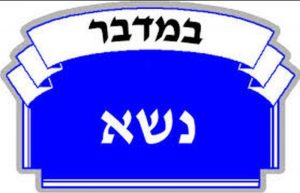Kinshasa : 17:37-18:29, Abuja : 18:31-19:25, Lagos : 18:43-19:36, Enugu : 18:27-19:20,
Abia : 18:25-19:18, Delta : 18:29-19:22, Anambra : 18:28-19:21, Imo : 18:27-19:20, Harare : 17:10-18:04, Yaoundé : 18:06-18:59, Antananarivo : 17:02-17:56, Accra :17:56-18:49,
Libreville : 18:08-19:01
 Parshat Naso is the longest parasha in the annual reading cycle of the Torah. It gains this status because of the very repetitive wording of the offerings brought by the tribal chieftains to the Mishkan (Tabernacle) for the dedication of the altar. Starting with Numbers 7:12 and continuing through verse 83, each of the twelve tribal chieftains is described presenting exactly the same offering: one silver bowl weighing 130 shekels, one silver basin weighing 70 shekels, both filled with choice flour mixed with oil; one gold ladle of 10 shekels, filled with incense; one bull, one ram, and one lamb for the ‘olah-sacrifice; one goat for the hattat-sacrifice; and two bulls, five rams, five goats, and five lambs for the shelamim-sacrifice. But instead of just saying that each tribal chieftain brought exactly the same offering, the Torah repeats the above details twelve times. Then, at the end of this long text appears a summary section detailing the totals: twelve silver bowls, twelve silver basins, twelve gold ladles, and so on for all the animals (verses 84-88).
Parshat Naso is the longest parasha in the annual reading cycle of the Torah. It gains this status because of the very repetitive wording of the offerings brought by the tribal chieftains to the Mishkan (Tabernacle) for the dedication of the altar. Starting with Numbers 7:12 and continuing through verse 83, each of the twelve tribal chieftains is described presenting exactly the same offering: one silver bowl weighing 130 shekels, one silver basin weighing 70 shekels, both filled with choice flour mixed with oil; one gold ladle of 10 shekels, filled with incense; one bull, one ram, and one lamb for the ‘olah-sacrifice; one goat for the hattat-sacrifice; and two bulls, five rams, five goats, and five lambs for the shelamim-sacrifice. But instead of just saying that each tribal chieftain brought exactly the same offering, the Torah repeats the above details twelve times. Then, at the end of this long text appears a summary section detailing the totals: twelve silver bowls, twelve silver basins, twelve gold ladles, and so on for all the animals (verses 84-88).
At first glance, all of this makes for rather laborious reading indeed! But upon closer inspection, and within its own cultural setting, such a conclusion is unjustified and unwarranted. Let me explain.
Clearly modern readers question the need for such a repetitive description. Why did the Torah not just state what I suggested above? Why could it not simply list once what each chieftain brought and then state that such was done twelve times? Would not that have been much simpler? From our perspective, yes. But from the perspective of ancient literature, the answer is no. [1]
Scholars have noted that the same practice can be found in archival material from throughout the ancient Near East, and in particular in instances such as this where sacrifices or cultic practices are described. A host of Babylonian and Hittite texts parallel the basic style of the account in Numbers 7:12-88. The point is: we moderns should not judge this text too hastily in light of our own expectations. Every culture has its own conventions, in art, literature, and so on. The culture of the ancient Near East, of which ancient Israel was an integral part, obviously called for this type of accounting, without the “shortcut” that we might expect.
In fact, the Bible has quite a number of such texts, and perhaps the most striking of all is the list of kings defeated by Joshua in Joshua 12:9-24. Our style would call for simply listing the kings, and then stating that there were 31 kings in all. But notice how the biblical account adds the number one after each king-thus the word ‘ehad “one” appears 31 times!-and then sums up with the words “total kings, 31” (Joshua 12:24).
But there is more that can be said about the matter, and indeed Sifre and Ramban already point the way. When I teach this material to American university students, I tell them that this should be the final lesson that they take with them when they graduate from our institution. Cornell University is comprised of numerous divisions (Arts and Sciences, Engineering, Agriculture, Law, Business, Hotel Management, Veterinary Medicine, etc.). At the commencement ceremony which occurs each May, with thousands of people present in the large football stadium, each Dean comes to the podium and presents the graduating students from his or her particular division of the University. After each Dean’s presentation, the President of the University repeats the same statement over and over again, “Upon the recommendation of the faculty and by the authority invested in me by the Trustees of Cornell University, I hereby confer upon each of you the degree of Bachelor of Arts [or whatever the particular degree is, depending on the division], with all the rights, privileges, honors, and responsibilities pertaining thereto.” This goes on for a considerable amount of time. For those seated in the stadium, sometimes under the hot sun without relief (and especially for the faculty and the students in their academic robes!), it would be far simpler for the President to make this statement just once, after all the students from all the divisions are presented. I prepare my students for their final lesson from our institution: that as they sit there at the commencement ceremony, they should think about Parashat Naso, and the manner in which the presentation of each of the tribal offerings is worded. Each one deserves to be mentioned individually. In like manner, each division of the University deserves to be mentioned individually. Sifre Naso 53 and Ramban in his comments to this section state that the offering of each tribal prince needs to be stated in full to show that “all of them are equal in merit.” One can imagine each tribe standing with pride as the Torah was read in public gathering, listening to the wording of its offering, even though that wording was no different than that of the other eleven tribes; just as each group of students and their families gather at the commencement ceremony listening attentively to the wording of its division, even though that wording does not differ from that of the other divisions. In short, I should alter my statement above, for this pattern reflects not only an ancient literary convention, but it also is present in our own society today.
But that is not the end of our discussion. The Torah takes every opportunity to engage its readers literarily. This is abundantly clear in the narrative portions of the Torah; the storytelling is universally regarded as literature of great sophistication. But even the driest text is imbibed with a literary style that invites the reader’s attention. This is true of the legal material of the Torah, notwithstanding the use of the ancient Hebrew equivalent of “legalese,” and it is true of the sacrifices and related material as well. Let me illustrate with the current text, clearly one of the potentially driest in the entire Torah.
The repetitive structure is interrupted, albeit ever so slightly, in two instances. The first of these is in verse 19 where the second chieftain (Netanel from the tribe of Issachar) brings his offering. In the other eleven instances the description begins simply with the word qorbano “his offering.” But in verse 19 we read hiqriv ‘et qorbano “he offered his offering.” Now this is only a slight diversion. [2] But it must have been a stylistic device of ancient Hebrew, because I have detected parallel examples in other listings in the Bible, always at the second position. Without entering into details, the interested reader can look carefully at the two censuses of the twelve tribes in Numbers 1 and Numbers 26, at the offerings for the seven days of Sukkot in Numbers 29; and at the titles of the fifteen Songs of Ascent in Psalms 120-134. In each of these instances the wording is slightly different for the element in second position. This also helps explain the absence of the expected refrain “God saw that it was good” from the second day of creation in Genesis 1.
The second stylistic device occurs at the end of the entire section in the totals. In every instance, both in the individual listings and in the totals, the syntactic order is always item followed by number, thus, for example, “basin, one . . . ladle, one . . . bull, one . . .” and so on. But at the very end, in the totals, on two occasions we have the reverse syntactic order, thus “12 bulls” (verse 87) and “24 bulls” (verse 88). [3] Professor Aharon Mirsky of Hebrew University in Jerusalem has noted that in literary texts conclusion often is marked by a slight syntactic change; for example, if all the lines in a poetic stanza are in verb-subject order, then the last line often will be in subject-verb order. [4] I think we thus can explain the change in word order here in our text as well. We have at long last reached the end, a point obvious to the reader from the fact that totals are being presented, but the stylistic device is utilized nevertheless.
Again, to point to an example from a more familiar text, this will explain the statement at the end of the creation story in Genesis 1 that G-d saw that all was “very good” (verse 31) as opposed to “good” on the previous days.We also may cite two examples from last week’s Torah reading, Parashat BeMidbar. In the census in Numbers 1, the tribes (after the first one, Reuben, which also has a different wording) are introduced with the expression livne X “for the sons of X” (vv. 22-40), but the final tribe Naphtali is introduced without the lamed, that is, with bene naftali “the sons of Naphtali” (v. 42). Similarly, in the alignment of the twelve tribes into four separate groups surrounding the Mishkan (Tabernacle), described in Numbers 2, the wording of the first three groups is risho’na yissa’u “they traveled first” (v. 9), shniyyim yissa’u “they traveled second” (v. 16), and shelishim yissa’u “they traveled third” (v. 24), but for the final group the wording is slightly different, adding an extra word, la’aharona yiss’u lediglehem “they traveled last by their flags” (v. 31).
The Torah is a remarkable composition from many angles. But not the least of these is, as I said above, its literary sophistication. No section of the Torah is to be less interesting than any other section for the reader. Thus, even at its potentially driest, the Torah is alive with literary features that invite the reader to explore and enjoy.
[1] Obviously, this point was noted by earlier readers as well, starting with Sifre. Of the medieval commentators, Ramban has the longest comment to make concerning the repetitive wording of this section. See further below.
[2] Not surprisingly, this slight change in wording was noted by several medieval commentators, such as Rashi and Ibn Ezra. These two scholars offered different explanations; the former repeated a midrash found in Sifre, while the latter understood that a stylistic device of some sort was present (though not the one under discussion here). But regardless of the explanations proffered by these commentators, they clearly were sensitive to the different wording in v. 19.
[3] Oddly, in this no case, not a single commentator (or at least none of the seven major scholars that I consulted [Saadia, Rashi, Rashbam, Ibn Ezra, Ramban, Hizquni, Seforno]) noted this slight change in wording.
[4] Aharon Mirsky, “Stylistic Device for Conclusion in Hebrew,” Semitics 5 (1977), pp. 9-23.
